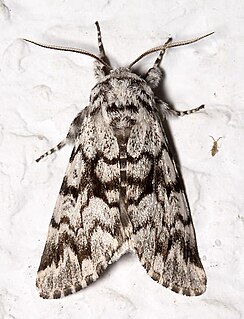
Panthea acronyctoides is a species of moth of the family Noctuidae. It is found in from Newfoundland to British Columbia and adjacent northern states, south in the west to Colorado, south in the east to New England and Kentucky.
Hypocoena basistriga is a species of moth of the family Noctuidae. It is found from Newfoundland and Labrador west to British Columbia and Yukon. This species of moth is found to frequent mesic areas including the edges of aspen bluffs and hayfields, old fields, meadows, etc.
The narrow-winged borer is a species of moth of the family Noctuidae. It is found from Maryland and Massachusetts north to New Brunswick, west to North Dakota and British Columbia.
The sordid wainscot or tufted sedge moth is a species of moth of the family Noctuidae. It is found across Canada from Newfoundland to British Columbia, south in the east to Connecticut and Ohio and in the west to Colorado.
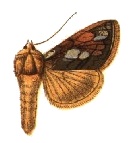
Plusia putnami is a species of moth of the family Noctuidae. It is found in the Palearctic ecozone, from Japan and eastern Siberia to Fennoscandia, Great Britain and France. In North America, it ranges from Newfoundland and Labrador to central Alaska and the interior of British Columbia, south to Pennsylvania, Washington, north-eastern California, and in the Rocky Mountains to Utah and Colorado.
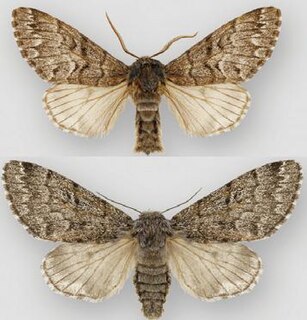
Panthea virginarius, the Cascades panthea, is a moth of the family Noctuidae. It is mainly found west and north of the Great Basin, from the coast of southern California northward to the Queen Charlotte Islands of British Columbia and the Alaskan Panhandle, eastward to central California, northern Nevada, Idaho, north-western Wyoming, western Montana, and south-western Alberta. A disjunct population is found in the Cypress Hills of Alberta and Saskatchewan.

The Brother is a moth of the family Noctuidae. It is found from Nova Scotia west, across the forested regions of Canada to British Columbia, south to Mississippi in the east. The southern limits in the west are uncertain due to confusion with several closely related species or forms.
The sand-verbena moth is a moth of the family Noctuidae. It is found on sandy ocean beaches in British Columbia and Washington.
Mesogona olivata is a moth of the family Noctuidae. It is found from southern coastal and interior British Columbia south through California, Colorado and Texas. It most likely also occurs in northern Mexico.
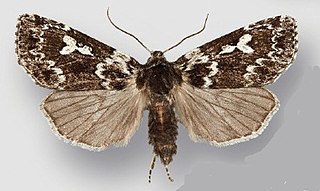
Xestia perquiritata, the boomerang dart, is a moth of the family Noctuidae. It is found across North America from Newfoundland, Labrador and northern New England, west to central Yukon, British Columbia and Washington. There are several disjunct populations, including one in the Great Smoky Mountains National Park and the Rocky Mountains in Colorado and a coastal bog in central Oregon.

The flax bollworm is a species of moth of the family Noctuidae. It is found in China, Kazakhstan, central Asia, northern Mongolia (Khangai), the Russian Far East, the Korean Peninsula, southern European part of Russia, southern and central Europe, southern and eastern Siberia and Turkey. In North America it is found from south-central Manitoba west to British Columbia, north to the Northwest Territories and Yukon and Alaska and south to Colorado.

Lasionycta secedens is a moth of the family Noctuidae. It has a Holarctic distribution. North American populations are distributed from Labrador, northern Manitoba, and Alaska, southward to northern Maine, northern Minnesota, and south-central British Columbia. Subspecies bohemani occurs in northern Eurasia, Alaska and Yukon.

Lasionycta fergusoni is a moth of the family Noctuidae. It is found from the southern Washington Cascades through British Columbia and Alberta to southern Yukon.

Lasionycta illima is a moth of the family Noctuidae. It is found from Pink Mountain in north-eastern British Columbia through southern Yukon to eastern Alaska.
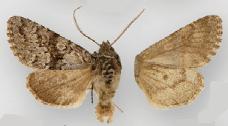
Lasionycta subfuscula is a moth of the family Noctuidae. It is found from south-western British Columbia and south-western Alberta south to southern Oregon in the west and to southern Colorado and Utah in the Rocky Mountains.

Lasionycta uniformis is a moth of the family Noctuidae. It is widely distributed in the mountains of western North America. It occurs from southern Yukon to northern California and Colorado, with an isolated population in eastern Quebec.
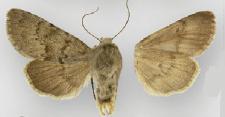
Lasionycta promulsa is a moth of the family Noctuidae. It occurs from Rampart House in northern Yukon to south-western British Columbia in the west and southern New Mexico in the Rocky Mountains.

Lasionycta impingens is a moth of the family Noctuidae. It occurs from southern Yukon to Colorado.
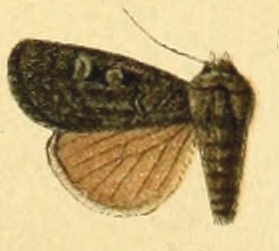
Feltia nigrita is a moth of the family Noctuidae. It is found in Siberia, central Yakutia, the Amur and Primorye regions, as well as British Columbia, Alberta, Saskatchewan, Yukon and Manitoba.
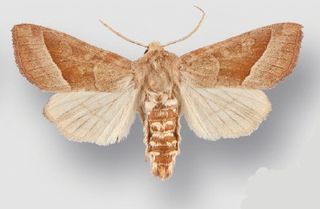
Hydraecia obliqua is a moth in the family Noctuidae first described by Leon F. Harvey in 1876. It is found in western North America, east to the Sierra Nevada in California and the crest of the Cascade Range in Oregon and Washington. It occurs continuously on the coast north to south-western British Columbia, with a disjunct northern population at Terrace, British Columbia. The habitat consists of the riparian zone along creeks and rivers of coastal rainforests, as well as oak savanna, mixed hardwood forests and valley grasslands.







